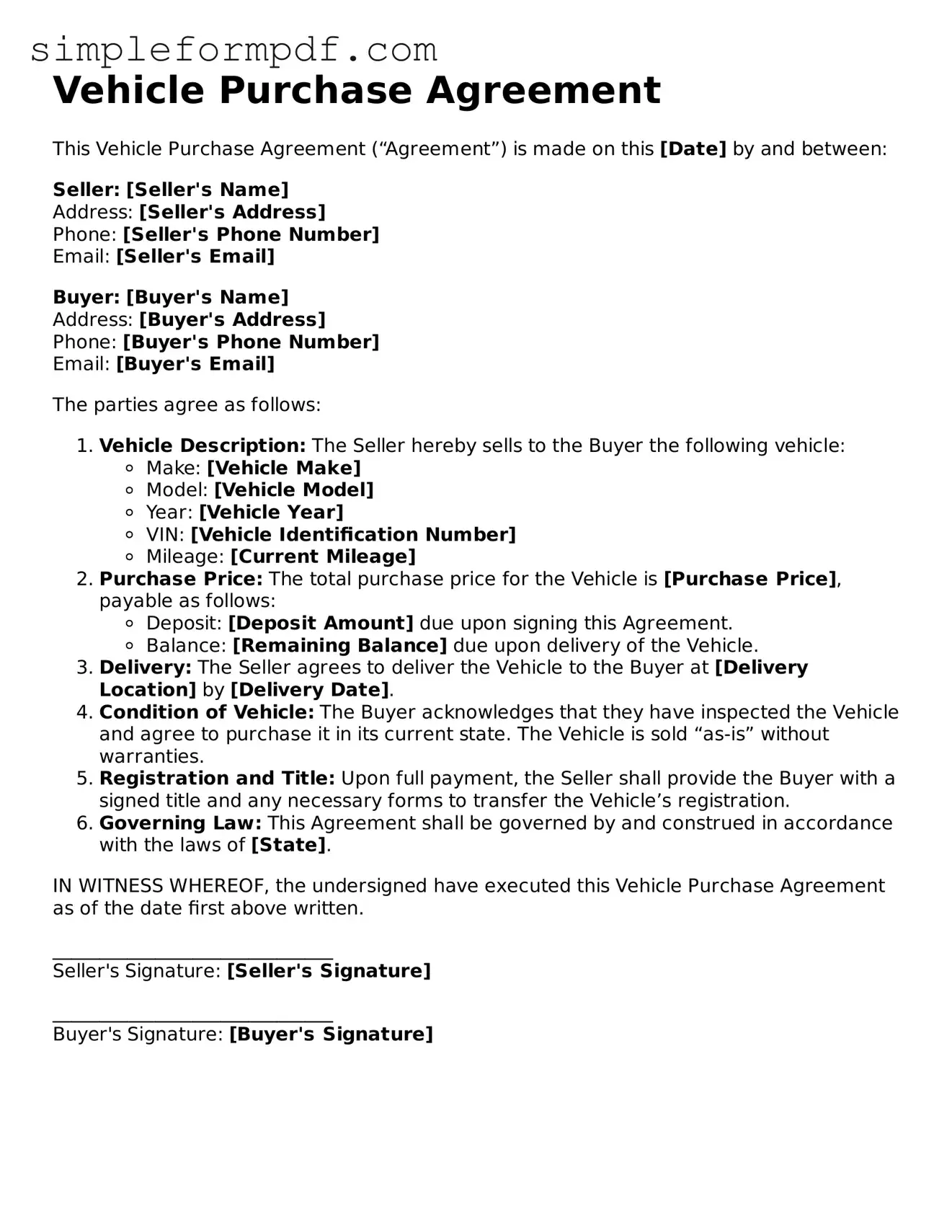Vehicle Purchase Agreement
This Vehicle Purchase Agreement (“Agreement”) is made on this [Date] by and between:
Seller: [Seller's Name]
Address: [Seller's Address]
Phone: [Seller's Phone Number]
Email: [Seller's Email]
Buyer: [Buyer's Name]
Address: [Buyer's Address]
Phone: [Buyer's Phone Number]
Email: [Buyer's Email]
The parties agree as follows:
- Vehicle Description: The Seller hereby sells to the Buyer the following vehicle:
- Make: [Vehicle Make]
- Model: [Vehicle Model]
- Year: [Vehicle Year]
- VIN: [Vehicle Identification Number]
- Mileage: [Current Mileage]
- Purchase Price: The total purchase price for the Vehicle is [Purchase Price], payable as follows:
- Deposit: [Deposit Amount] due upon signing this Agreement.
- Balance: [Remaining Balance] due upon delivery of the Vehicle.
- Delivery: The Seller agrees to deliver the Vehicle to the Buyer at [Delivery Location] by [Delivery Date].
- Condition of Vehicle: The Buyer acknowledges that they have inspected the Vehicle and agree to purchase it in its current state. The Vehicle is sold “as-is” without warranties.
- Registration and Title: Upon full payment, the Seller shall provide the Buyer with a signed title and any necessary forms to transfer the Vehicle’s registration.
- Governing Law: This Agreement shall be governed by and construed in accordance with the laws of [State].
IN WITNESS WHEREOF, the undersigned have executed this Vehicle Purchase Agreement as of the date first above written.
______________________________
Seller's Signature: [Seller's Signature]
______________________________
Buyer's Signature: [Buyer's Signature]
